Updated: 17-Jun-2019
“Instituto Nacional de Industria” (National Institute of Industry). As such it intervened in the nationalization of Hispano Suiza and the Elizalde in Barcelona and its transfers to Madrid.
-As the ENASA the former and as ENMASA the latter (see).
-It produced an engine called INI-11, designed by the Technical Studies Section of Aviation Engines, in collaboration with CETME.
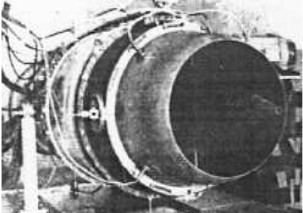
“INI-11”
-Several national industries were involved in its construction and its completion. Assembly and tests were carried out in workshops and on benches at the National Institute of Aerospace Technology Esteban Terradas.
-The prototype gave 1,600 Kgf of thrust, weighing 600 Kg. It was successfully tested on August 2, 1955 and in 1956 work was interrupted. (See Heinkel HeS-011).

“INI-11 design”
-The INI-11 was also known as "Aries". It was based on the plans of the HeS-011.
-In the AVION Magazine it was presented as "the first Spanish turbojet engine, designed and built in Spain".
-Without taking merit to the fact, due to the times that ran.
-Perhaps it would have been the base for other more interesting things but it is to suppose again that the facility of obtaining good material thanks to the American aid made all this work sterile.
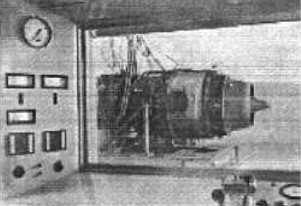
“The INI-11 at INTA”
-For the development of this engine there was a team of German engineers and technicians until the end of the program.
-The INI-12, which was a copy of the Hispano Suiza R-800, was abandoned.
-The HS R-800 in 1955 delivered 1,200 Kgf of thrust. In Spain it reached 1,400 Kgf.
-The whole program for the airplane to which this engine was destined, the Ha-300, was sold to Egypt with the intention of installing local designed engines (see Helwan), or at least the Bristol Orpheus. This did not support the development of the INI-12 project. This INI engine was on its way to surpass 1,600 kgf of thrust.
-Today we can see a life-size model of the Ha-300 airplane and one of the INI-11 prototypes at the Cuatro Vientos Air Museum in Madrid.
From Appendix 6: In the mid-1950s, they were developing, what was said to be the "first" turbojet engine in that country, the INI-11.
-INTA and also armament factories such as CETME took part of it. Actually it was a development of the German HeS-011, involving a team of technicians who were exiled from that country after WWII.
-INI was the National Institute of Industry with the task of relaunching the industry.
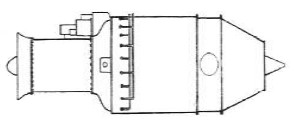
“INI-11 drawing”
From Appendix 9: More information is available on the INI-11, the first turbojet built in Spain during the mid-1950s.
-As it is said in the main text, it was based on the Heinkel HeS-011.
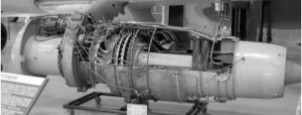
“A sectioned HeS-011”
-Surely there must have been some differences with respect to the original.
-At least on the outside we can see that the original German engine had a Riedel starter, while the Spanish one had an electric starter.
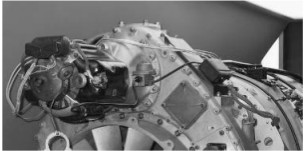
“Riedel starter at the upper front side of the engine”
-We can see the starter motor in black and the ring for starting. The INI-11 project director was Antonio Nuñez with a team of German engineers brought after WWII, and some Spaniards.
-It was done at the Department of Motopropulsion of INTAET.
-There was a small engine project, called the "Gemini".
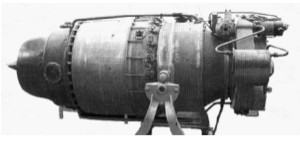
“The INI-11”
-It turned out that a German pilot called Fritz Shaffer brought some plans of the German engine (free of rights) and offered them to the Spanish government.
-This convinced the Spanish Air Force, bringing together technicians and engineers Loffler, Olbrich, Ruprecht, Schenegg and Helmecke.
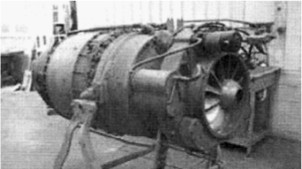
“The INI-11 with electric starter”
-The Spanish engineers include C. Sanchez Tarifa, Jacobo Valdés, Martin-Montalvol, Garcia Moreno, Ricardo Martin.
-Tarifa's intervention was fundamental in modifying some aspects of the engine such as changing the axial compressor from two stages into one more-effective stage. (In front of these steps the engine was distinguished by having a diagonal compressor).
-The combustion chamber was redesigned. The two-stage turbine also became a single one.
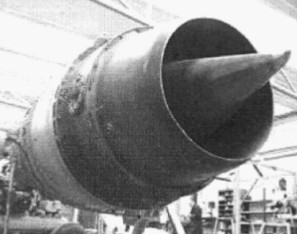
“INI-11 outlet nozzle”
-This engine is now at the Cuatro Vientos Air Museum, pending a slight restoration.
Engines of INI
Model: INI “Gemini” pequeño
Arquitecture:
Compressor/s:
Combustion chambers:
Turbines:
Power / Thrust: / ---
Weight:
Model: INI-11, Aries (base HeS-011)
Arquitecture:
Compressor/s:
Combustion chambers:
Turbines:
Power / Thrust: / ---
Weight:
Model: INI-12, (base HS R-800)
Arquitecture:
Compressor/s:
Combustion chambers:
Turbines:
Power / Thrust: / ---
Weight:


